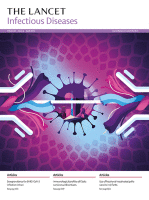SARS-CoV-2 antibody seroprevalence in the general population and high-risk occupational groups across 18 cities in Iran: a population-based cross-sectional studySARS-CoV-2 antibody seroprevalence in the general population and high-risk occupational groups across 18 cities in Iran: a population-based cross-sectional study
Authors
HosseinPoustchiPhDa*MaryamDarvishianPhDd*ZahraMohammadiMScaAmanehShayanradMScaAlirezaDelavariMDbAyadBahadorimonfaredPhDeSaeidEslamiPhDfShaghayegh HaghjooyJavanmardPhDgEbrahimShakibaPhDhMohammad HosseinSomiMDiAmirEmamiPhDjNaderSakiMDkAhmadHormatiMDlAlirezaAnsari-MoghaddamPhDmMajidSaeediPhDnFatemehGhasemi-KebriaMScoIrajMohebbiPhDpFariborzMansour-GhanaeiMDqManoochehrKaramiPhDrHamidSharifiPhDsFarhadPourfarziPhDtNasrollahVeisiMScuRezaGhadimiPhDvSarehEghtesadMScaAhmadrezaNiavaraniPhDbAliAli AsgariMDcAnahitaSadeghiMDcMajidSorouriMDcAmirAnushiravaniMDcMohammadAmaniMDcSoudehKavehMScaAkbarFeizesaniBScaPayamTabarsiMDwHosseinKeyvaniPhDxMelinehMarkarianMSccFatemehShafighianMScbAlirezaSimaMDcAlirezaSadjadiMDbAmir RezaRadmardMDyAli HMokdadPhDzMaryamSharafkhahMScaProfRezaMalekzadehMDbc
Abstract
Background
Rapid increases in cases of COVID-19 were observed in multiple cities in Iran towards the start of the pandemic. However, the true infection rate remains unknown. We aimed to assess the seroprevalence of antibodies against severe acute respiratory syndrome coronavirus 2 (SARS-CoV-2) in 18 cities of Iran as an indicator of the infection rate.
Methods
In this population-based cross-sectional study, we randomly selected and invited study participants from the general population (from lists of people registered with the Iranian electronic health record system or health-care centres) and a high-risk population of individuals likely to have close social contact with SARS-CoV-2-infected individuals through their occupation (from employee lists provided by relevant agencies or companies, such as supermarket chains) across 18 cities in 17 Iranian provinces. Participants were asked questions on their demographic characteristics, medical history, recent COVID-19-related symptoms, and COVID-19-related exposures. Iran Food and Drug Administration-approved Pishtaz Teb SARS-CoV-2 ELISA kits were used to detect SARS-CoV-2-specific IgG and IgM antibodies in blood samples from participants. Seroprevalence was estimated on the basis of ELISA test results and adjusted for population weighting (by age, sex, and city population size) and test performance (according to our independent validation of sensitivity and specificity).
Findings
From 9181 individuals who were initially contacted between April 17 and June 2, 2020, 243 individuals refused to provide blood samples and 36 did not provide demographic information and were excluded from the analysis. Among the 8902 individuals included in the analysis, 5372 had occupations with a high risk of exposure to SARS-CoV-2 and 3530 were recruited from the general population. The overall population weight-adjusted and test performance-adjusted prevalence of antibody seropositivity in the general population was 17·1% (95% CI 14·6–19·5), implying that 4 265 542 (95% CI 3 659 043–4 887 078) individuals from the 18 cities included were infected by the end of April, 2020. The adjusted seroprevalence of SARS-CoV-2-specific antibodies varied greatly by city, with the highest estimates found in Rasht (72·6% [53·9–92·8]) and Qom (58·5% [37·2–83·9]). The overall population weight-adjusted and test performance-adjusted seroprevalence in the high-risk population was 20·0% (18·5–21·7) and showed little variation between the occupations included.
Interpretations
Seroprevalence is likely to be much higher than the reported prevalence of COVID-19 based on confirmed COVID-19 cases in Iran. Despite high seroprevalence in a few cities, a large proportion of the population is still uninfected. The potential shortcomings of current public health policies should therefore be identified to prevent future epidemic waves in Iran.
Funding
Iranian Ministry of Health and Medical Education.
Metrics
- Citation Indexes:73
- Readers:231
- News Mentions:1

